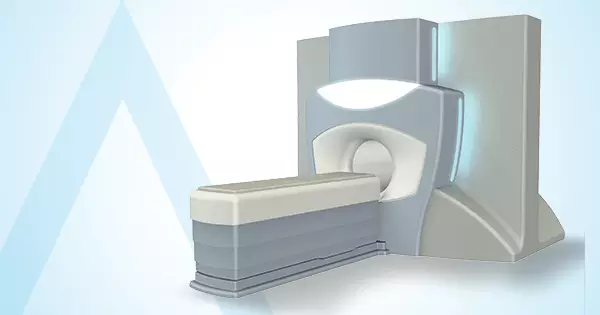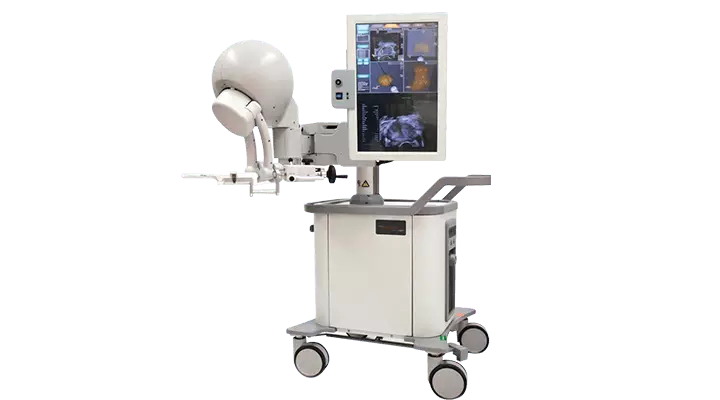Prostate gland is one of the most problematic organs in the male body. Although prostate diseases are mostly detected after 50s, it can sometimes cause problems in young men.
All complaints are assessed and routine screenings are performed by Urologists for diagnosis and treatment of prostate diseases.
Medical and surgical treatments are available for common prostate diseases, such as inflammation of prostate (Prostatitis), benign enlargement of prostate (Benign Prostatic Hyperplasia) and Prostate Cancer.
Diagnosis and Treatment Services Available for Prostate Diseases
Complaints that may be linked to prostate diseases are as follows:
- Difficulty initiating and terminating urine flow
- Weak or interrupted urine stream
- Pain and sensation of burning while voiding (dysuria)
- Often urge to urinate
- Sensation of residual urine
- Often voiding at night
- Sudden urge to urinate, urinary incontinence
- Dripping after voiding
- Inability to urinate (anuria)
- Blood in urine or semen
- Painful ejaculation
- Groin, hip, low back, back and/or leg pain
These complaints are specific to prostate gland and lower urinary tract. However, the prostate gland can be definitively diagnosed only after evaluation of patient by urologist following necessary diagnostic tests.
Prostate diseases may not cause any symptoms in early stages. Sometimes, asymptomatic disease can be diagnosed through digital rectal exam, PSA (Prostate Specific Antigen) test, urinalysis, radiology studies (ultrasound, multiparametric prostate MRI) and prostate biopsy (MRI/Ultrasound Fusion Prostate Biopsy).
Only a physician can interpret underlying causes of symptoms and signs related to the urinary tract. Anyone with such complaints should necessarily visit an urologist.
Prostate diseases can roughly be classified into three groups.
- Inflamed prostate gland (Prostatitis)
- Benign Prostate Hyperplasia (BPH)
- Prostate cancer
What is the Function of Prostate Gland?
Prostate is a secretory gland. It is an organ located immediately below urinary bladder; the urethra lies inside the gland along with tubes (vas deferens) that carries sperms from testes. Principal function of the prostate gland is to secrete a part of the liquid that forms the semen. It is approximately a walnut-sized gland in non-hyperplasic state.
What is Enlargement of Prostate Gland?
Enlargement of prostate gland is mostly benign in nature. Enlargement begins usually at the end of 40 years of age and persists at various paces till the death. Although benign prostate hyperplasia (BPH) is related to age, the exact cause is not clear.
Benign prostate hyperplasia may hinder proper flow of urine, as it leads to obstruction and stenosis in urinary tract and outflow tract of the urinary bladder. It may disrupt storage and voiding functions of the urinary bladder.
Although benign prostate hyperplasia is a very common condition, it may not be identically problematic in all men. It may be an ordinary result of aging in some men and it may not require treatment. Prostate hyperplasia requires treatment only if it leads to disturbing complaints, impairs function of voiding and may potentially harm the body.
Treatment of Benign Prostate Hyperplasia
The main definitive factors of treatment are the severity of complaints as well as the physical and functional problems originating from prostate hyperplasia. Although some patients do not specify a serious complaint, treatment is required in cases of recurrent urinary tract infections, recurrent blood in urine (hematuria), stone in urinary bladder and kidney failure.
Treatment approaches include:
- No direct action with regular follow-up/monitoring
- Medication (medical) treatment
- Surgical treatment options (Bipolar TUR-prostatectomy, Laser Greenlight prostatectomy, Holmium Laser Enucleation of the Prostate (HOLEP))
What is Prostatitis?
Prostatitis implies an inflamed prostate gland. The prostate gland swells and it is painful due to inflammation. Prostatitis can sometimes originate from bacteria, while there is often no microbial origin and the exact cause of prostatitis cannot be determined.
As opposed to prostate hyperplasia and prostate cancer, which are more common in older men, prostatitis can affect men in all age ranges.
Treatment of Prostatitis
Prostatitis can be treated with medication. The medication include, but are not limited to pain killers, anti-inflammatory agents, alpha blockers which relax the prostate gland and neck of urinary bladder as well as certain antibiotic agents.
Although the condition recovers within several weeks to several months in most men, symptoms may persist for a longer period of time in others.
What is Prostate Cancer?
The type of cancer that begins in prostate tissue is called “prostate cancer.” Prostate cancer is one of the most common cancers in Western countries.
The exact causes have not yet been explained, but it is known that aging increases risk of prostate cancer in men. It is generally diagnosed in men over 65 years of age, but it can be speculated that the risk starts increasing after 50. If there is prostate cancer in close male relatives (father, brothers, uncles, etc.), the risk of prostate cancer is higher.
Results of treatments are satisfying especially when prostate cancer is detected in early stages. Another distinctive feature of prostate cancer is slow progression and instable behavior.
Treatment of Prostate Cancer
Treatment options may vary depending on stage and severity of the disease. Treatment methods may be used alone, in combination, consecutively or alternatively, depending on condition of patient or stage of disease. Treatment-free follow-up can be an option for some patients.
One of following treatment options is started in most patients following necessary diagnostic tests:
- Surgical treatment (da Vinci robotic-assisted radical prostatectomy, open radical prostatectomy)
- Radiation treatment (radiotherapy, brachytherapy)
- Focal therapy (HIFU, cryotherapy)
- Medication treatment (hormone treatment, chemotherapy).
Prostate Cancer
Prostate cancer is the most common cancer in men.
It is the second most common cause of cancer deaths. The lifetime risk of prostate cancer is approximately 17% for a healthy man. In other words, one out of every 6 men is diagnosed with prostate cancer.
Prostate cancer develops when certain cells of prostate tissue convert into cancerous structure through an abnormal course. The disease may develop either at one part of the gland or at multiple foci.
This disease is generally detected in people older than 65 and it may be asymptomatic at early stages. However, if it is left untreated, it can enlarge and compress urethra over time. For these patients, certain urinary problems can develop.
Cancerous tissues are not confined to the prostate gland or they may spread to surrounding tissues, if diagnosis and treatment delay.
Prostate cancer spreads particularly to bones. Diffuse bone ache is likely in patients with metastasis.
Symptoms of Prostate Cancer
Localized (confined to prostate gland) prostate cancer often develops without any sign. Some symptoms of prostate cancer are as follows:
- Dysuria
- Difficulty in urination and blood in urine
- Blood in semen
- At advanced stages, bone metastases, resultant bon ache and sometimes, fractures
Treatment of prostate cancer cannot be started in a timely manner, if a person ignored regular screening or does not present for routine examinations despite documented cancer. In these cases, the disease starts to progress.
Diagnosis of Prostate Cancer
Today, there is no early diagnosis method to reveal out presence of prostate cancer in a healthy man.
Advancing age, ethnic origin and genetic predisposition are acknowledged risk factors of prostate cancer. In the light of these risk factors, tests are conducted for early diagnosis.
Although prostate cancer screening is recommended for men older than 50 with no family history of prostate cancer, others with family history of prostate cancer are advised to have prostate cancer screening after 45 years of age due to increased risk.
Screening methods are digital rectal examination (for prostate) and PSA analysis in blood specimen.
PSA Test and Prostate Examination in Diagnosis of Cancer
Prostate cancer can be diagnosed early with a PSA (prostate specific antigen) test in a blood specimen. Early diagnosis of prostate cancer is essential to have more treatment options.
Reference for normal range of PSA: Hans-Joachim Luboldt, Joachim F. Schindler, Herbert Rubben .Age-Specific Reference Ranges for Prostate-Specific Antigen as a Marker for Prostate Cancer.eau-ebu update series 5 (2007) 38–48.
40 to 49 years of age: 0- 2.5 ng/ml
50 to 59 years of age: 0- 3.5 ng/ml
60 to 69 years of age: 0- 4.5 ng/ml
70 years or above: 0- 6.5 ng/ml
PSA readings may also be high in case of benign prostate hyperplasia - BPH, prostate inflammation (prostatitis), after sexual intercourse, after digital rectal examination, urinary tract infection and urinary tract procedures (placement of catheter) and surgeries along with prostate cancer.
Therefore, high PSA level does not always verify a cancer, while low PSA level is not sufficient to rule out.
Prostate cancer is detected in 1 out of every 5 patients with normal PSA levels.
Therefore, digital rectal examination is combined with PSA reading in diagnosis of prostate cancer. This examination enables to have an opinion about presence of prostate cancer without PSA analysis.
If these tests lead to a suspicion, some additional tests can be performed for diagnosis of prostate cancer. These tests are as follows:
Multiparametric MRI
For patients with suspicion of prostate cancer, this imaging modality evaluates 3 parameters and the focus with suspicion of cancer in prostate gland can be identified.
One of these parameters (diffusion) detects the increase in cellular density of body. Since cancerous cells are denser, they create higher signals.
Vascularization in tissues (perfusion) is the other parameter.
Since more blood is supplied to cancerous tissues, they are rich in blood vessels and therefore, they can be differentiated from healthy tissues.
In another parameter (spectroscopy), chemical analyses of intact tissues and cancer tissues are made and tissues are differentiated by reviewing a certain substance, namely choline, which originates from cell destruction.
Above mentioned parameters are scored in a multiparametric prostate MRI to clarify whether a patient has a tumor or not.
Multiparametric Prostate MRI can demonstrate whether the tumor exceeds the prostatic capsule and whether it has potentially spread to lymph node(s). Moreover, these MRI images are used as a guide for prostate biopsy. In conclusion, final diagnosis of cancer can only be established through biopsy.
Prostate Biopsy
Biopsy implies taking tissue or cell specimens from any part of the body in order to examine the specimen under microscope or perform various tests.
Various parts of the prostate gland are biopsied in a prostate biopsy.
In standard prostate biopsy, pieces are collected randomly from the prostate gland using a special device that is inserted into rectum under local anesthesia. It is checked whether there is cancerous cell in these tissues or not.
MR Fusion Biopsy
In this method, prior multiparametric MRI images are transmitted to an ultrasound scanner that guides the biopsy procedure in order to locate the tumor accurately.
Thus, the suspicious focus is directly “targeted” and biopsied rather than collecting pieces “randomly” in conventional biopsy. As exact location of tumor or suspected focus can be identified, smaller specimens will be sufficient rather than collecting multiple pieces.
Fusion biopsy can be performed with two methods. One of them is transperineal approach, where the biopsy device is inserted through the perianal skin. The procedure can be performed under general or local anesthesia.
The other one is transrectal method that prefers rectum to access the prostate gland. This procedure can also be performed under local anesthesia.
Treatment of Prostate Cancer
After prostate cancer is diagnosed, treatment is planned considering disease factors (stage, spread) and patient factors (general status, age, co-existing diseases).
Is there any non-surgical treatment option for prostate cancer?
Prostate cancer can be treated with surgery, radiotherapy or hormone therapy. Treatment modality is decided by patient factors and overall health.
What is the most commonly preferred treatment option in prostate cancer?
Today, prostate cancer can be diagnosed at early stages, as screening tests are ever increasingly used.
Surgery is mostly preferred for early-stage local prostate cancer without near or distant metastasis. When necessary, treatment can be combined with hormone therapy or radiotherapy.
Active follow-up:
Prostate cancer progresses slowly at Stage 1; it may, sometimes, be asymptomatic and does not cause any health problem. Your doctor follows up the progression of cancer at this stage with PSA analyses, digital rectal examination and ultrasound. At the same time, risk of spreading is evaluated (scored).
Active follow-up aims close monitoring of patients with low-risk and slowly-progressing disease in order to start treatment, whenever required, such that chance of treatment is not lost. Thus, unnecessary treatments can be prevented in a group of patients.
NanoKnife
NanoKnife is used to treat clinically insignificant tumor that implies prostate cancers with low volume and low risk.
Also used for treatment of certain liver and pancreatic tumors, it is a safe method for focal treatment of prostate cancer.
For NanoKnife ablation, ultrasound guidance is used to place 3 to 4 special electrodes around the tumor located in prostate gland and these electrodes deliver electric current at a very high dose (3000 volt - 50 ampere) for a very short time. An electromagnetic area is formed at the target and permeability of cell wall increases temporarily. In this way, tumor cells lose their viability.
Since this method does not cause temperature changes in tissues, it can be considered for tumors located close to nerves and urethra.
Patient selection is the most crucial part of this technique. The treatment modality should not be used for group of patients who are good candidates of active follow-up.
Since only cancerous cells of prostate gland are damaged after the procedure, there is future risk of cancer in other segment of prostate over time. Should this risk is actually faced; curative (surgery, radiotherapy) treatment is planned. In other words, this treatment option aims to postpone curative surgery as much as possible. Therefore, it is targeted to delay potential side effects of curative treatments.
Surgical Treatment – Radical Prostatectomy in Prostate Cancer
It implies surgical removal of prostate gland to treat localized prostate cancer. This method is called radical prostatectomy. Ten-year survival rate of patients with low-grade tumor and history of radical prostatectomy is over 90%.
What is Robotic-Assisted Surgery?
Robotic-assisted surgery is laparoscopic (closed) performed using Surgical Robotics, called “da Vinci” Surgical System, under 3D image guidance. Many laparoscopic surgeries (urologic, general surgery, gynecology, etc.) can be performed using this system.
What is function of Surgeon in Robotic-Assisted Surgery?
The misconception on concept of robotic surgery is that the surgery is performed solely by the robot. However, it is the surgeon who performs the operation, but not the robot.
What are Complications of Prostate Cancer Surgery with a Robotic-Assisted System?
In anatomic terms, prostate gland is very close to the structures that are responsible for erection and urinary continence. Therefore, the most important complications of prostate surgery are postoperative erectile dysfunction and urinary incontinence.
The main purpose of Robotic-assisted Prostate Surgery is to remove the prostate gland without leaving any residual cancerous tissue, preserve nerves that will ensure maintenance of sexual functions and not to damage the structures that regulate the urinary continence.
Exposing the anatomic plane between the urinary bladder and the prostate gland is defined as “Urinary Bladder Sparing Method” within scope of robotic-assisted prostate surgeries. Rates of incontinence have drastically decreased after surgeries performed with this technique.
How does robotic-assisted surgery differ from open surgery?
An approximately 15-cm incision is made below the belly button in conventional open surgery. Open surgery poses many difficulties for both the patient and the surgical team.
Prolonged postoperative convalescence, longer hospital stay, risk of wound infection and larger incision scar are the adversities that patients face.
There are also some challenges for surgical treatment, including a small room for hand moves due to narrow surgical site, longer duration of surgery due to poor visibility of the surgical site and increased complication rates.
A robotic device, called da Vinci, is conveniently placed above the patient and the surgery is carried out by a surgeon who uses a console to command the surgical instruments of the system. General principles are similar to those of laparoscopic surgery.
Thin robotic instruments, the wide range of moves, ability to eliminate tremor and advanced imaging system of the robotic system allow better protection for significant structures that are nearby the prostate gland in a prostate surgery. Thus, risk of intraoperative complications is minimized, blood loss is reduced and surgery is completed within a shorter time.
Risk of other health problems is also decreased that has substantially adverse effects on social life, such as milder postoperative pain, shorter convalescence, future loss of sexual functions and chronic urinary incontinence.
Irrespective of surgery technique, certain phases of robotic-assisted prostate cancer surgery also require acting very precisely.
Here, the main purpose is to remove the prostate gland without leaving any residual cancerous tissue, preserve nerves that will ensure maintenance of sexual functions and not to damage the structures that regulate the urinary continence.
A new technique is developed that exposes the anatomic plane between the urinary bladder and the prostate gland in robotic-assisted prostate surgeries. This method, called “urinary bladder sparing technique” in the literature, is characterized by very low rate of early- or late-onset urinary incontinence.
Radiotherapy
Radiotherapy uses ionizing radiation to treat cancer. Radiotherapy aims to minimize the damage to healthy tissues, while cancerous cells are killed or their growth is stopped.
Radiotherapy is a local treatment option, similar to surgical methods, and therefore, both therapeutic effects and side effects are local. Although radiotherapy is used as a curative treatment option for localized prostate cancer, it is also a palliative or debulking (to reduce tumor load) modality for patients with prostate cancer that involve nearby organs (locally advanced) or distant organs (metastatic).
What are Side Effects of Radiotherapy?
Side effects of radiotherapy generally emerge in subsequent days rather than first several days, as the cumulative dose increases. They may not always occur and there are also inter-patient variations.
Some of usual side effects include skin irritation and fatigue. Radiation therapy may cause erectile dysfunction and urinary incontinence, if used for treatment of prostate cancer. Additional conditions include but are not limited to frequent urge to urinate and blood in urine (hematuria).
Chemohormonotherapy
Prostate cancer may spread to nearby tissues and distant organs rather than being confined to prostate gland at advanced stages. This is called advanced stage prostate cancer. Medication treatment is preferred at this stage of the disease, since surgical options will lead to undertreatment.
Prostate tissue is sensitive to testosterone (male sex hormone) and therefore, medicines that suppress effect of testosterone (anti-androgenic agents) are used at this stage of the disease. This treatment is called hormone therapy.
Chemotherapy is planned for patients who do not respond to or develop resistance against this treatment. Scientific studies have revealed out that survival is thus increased in patients with advanced-stage prostate cancer.
What are Causes of Prostate Cancer?
Age and family history are most prominent risk factors of prostate cancer.
Age: Aging increases incidence of prostate cancer. Microscopic prostate cancer is detected in 50% of men older than 70 and almost in all men older than 90.
Prostate cancer screening is recommended to all men older than 50 for early diagnosis.
The underlying rationale is the aging-related increase in incidence of prostate cancer.
Prostate cancer is most commonly diagnosed in men older than 65 in developed countries. Prostate cancer before 45 years of age is regarded as a rare condition.
Family history: Genetic and environmental factors also affect development and progression of prostate cancer.
Varying incidence of prostate cancer in different races and higher prevalence in men with positive family history indicate the role of genetic factors.
In a study, incidence of prostate cancer increased in men who migrate from Asian countries, where incidence of prostate cancer is low, to the U.S. Therefore, diet and environmental factors are considered to play a role in development of prostate cancer. However, these factors are not known for certain.
For example, although some studies suggest that exposure to cadmium in cigarette, diet rich in saturated fats, obesity and alcohol increase risk of prostate cancer, these results could not be accurately proven.
Nonetheless, these environmental factors should be taken into consideration to prevent prostate cancer, as is the case with other types of cancer.
On the other hand, some studies suggest that licopen, a substance found in dark colored fruits and vegetables (tomato, carrot etc.), decreases the incidence of prostate cancer.
Also, diets rich in soybeans and Omega-3 have been shown to decrease risk of prostate cancer.
Stages of Prostate Cancer
Treatment of prostate cancer is planned depending on grade and stage of tumor.
Grade of Tumor:
If prostate biopsy points to a cancer, the cancerous tissue is examined by a pathologist. Gleason Scoring System is the most commonly used grading system. Results give an idea on growth and spread rate of the tumor.
Low grade or low risk implies that tumor will grow slowly and the risk of metastasis is low.
On the other hand, a high-grade or high-risk tumor grows quickly and it may spread to other body parts.
Stages of Prostate Cancer:
Prostate cancer is staged according to how the tumor extends to prostate gland and surrounding or distant tissues. Following criteria are taken into consideration, when stage is determined.
Size of tumor
Spread of tumor in the prostate gland or surrounding tissue
Whether cancer has spread to lymph nodes
Spread to other parts of body (metastasis)
Stage I
Tumor is confined to prostate gland in Stage I. Tumor is too small to detect in digital rectal examination.
Stage II
Tumor spreads deep into prostate tissue in Stage II, but it does not involve the surrounding tissues. Tumor can be felt in digital rectal examination or visualized in imaging modalities (MRI) at this stage.
Stage III
Tumor has spread beyond the capsule of prostate gland and to surrounding tissues (such as seminal vesicles) at Stage III.
Stage IV
Cancer spreads to other surrounding tissues at stage IV (metastasis). Tumor usually involves lymph nodes, bones, liver or lungs at this stage.
Grade of prostate cancer should be determined, as it is very crucial to select the best treatment option and follow up course of the disease.
Prostate Biopsy
Prostate biopsy is used to diagnose the prostate cancer and to identify the progression rate and aggressiveness of the tumor.
Standard Prostate Biopsy
Trans-rectal ultrasound is more sensitive than transabdominal ultrasound in examination of the prostate gland. However, digital rectal examination is more important in routine tests and therefore, it is not used in routine clinical practice.
Transrectal ultrasound is primarily used by urologists to guide a prostate biopsy.
Biopsy is necessary when the PSA reading is above age-matched ranges or an abnormality is detected in digital rectal examination. An ultrasound probe is inserted into rectum to guide prostate biopsy and specimens are collected using automated biopsy needles. Biopsy is an outpatient procedure which is generally performed under local anesthesia.
Widely acknowledged prostate biopsy guidelines require collecting at least 12 pieces. Additionally, if a suspected area is detected in examination or ultrasound, this zone is also sampled.
Ultrasound guidance ensures the biopsy specimens are collected from the targeted zones in the procedure. It may be necessary to repeat biopsy, if the underlying cause of high PSA readings cannot be revealed out, PSA persists to elevate or result of prostate biopsy is suspicious.
Enlargement of prostate gland is called Benign Prostate Hyperplasia (BPH). Studies report that benign prostate hyperplasia is observed in 25% of men at 50 years of age and 90% of men at 80 years of age.
A study based on data of Turkish Statistics Institution (TÜIK) estimates that there are approximately 3.3 million patients with benign prostate hyperplasia in Turkey.
Prostate is an organ that is sensitive to male sex hormone, testosterone. It is observed that prostate gland does not enlarge when male sex hormone is not produced or the gland resists to the hormone.
However, the fact that prostate hyperplasia is more common in older ages where the testosterone levels are at lowest concentrations indicates that the issue cannot be clarified in all aspects.
Symptoms of Benign Prostate Hyperplasia (BPH)
Hyperplasia of prostate gland obstructs the urethra and thus, hinders urinary flow. Various voiding-related complaints emerge depending on severity of obstruction.
These Are the Symptoms of Prostate Hyperplasia:
- Weak urine stream,
- Difficulty starting urination,
- Urinary hesitancy,
- Sensation of residual urine,
- Often need to urinate,
- Urgent voiding attacks,
- Urinary incontinence,
- Abnormal urine stream and voiding at night (nocturia).
How is Prostate Hyperplasia Diagnosed?
Patients with above mentioned complaints should be examined regarding Benign Prostate Hyperplasia – BPH.
Benign character of prostate hyperplasia should be verified with PSA (Prostate Specific Antigen), urinalysis and digital rectal examination.
BPH is verified if results of these tests are normal. Ultrasound and Uroflowmetry are performed to identify severity of BPH. Moreover, International Prostate Symptom Score (IPSS) is also used which investigates the patient's complaints.
BPH is staged using all these data. Treatment method changes depending on the stage of BPH and the available option is either medical treatment or surgery (prostate surgery).
What Are Causes of Prostate Hyperplasia?
Although exact cause of prostatic hyperplasia is not certain, the most well-known one is aging.
It is demonstrated that genetic factors also play a role in BPH, but it is evidenced that incidence is higher in people with family history of BPH.
Moreover, studies are conducted on its relation with some environmental factors and nutrition, but no satisfactory result is revealed out.
Recently, studies focus on demonstrating the link between obesity and BPH. These studies revealed out that prostatic hyperplasia correlates with increased body weight, body mass index and waist circumference.
How is Prostate Hyperplasia Prevented?
Consumption of red meat, fats, carbohydrate and poultry meat increases the risk of prostatic hyperplasia, while vegetables, poly-unsaturated fatty acids, linoeic acid, Vitamin D and regular exercise decrease the risk.
How is Prostatic Hyperplasia Treated?
Since urinary bladder cannot be completely emptied due to the enlargement of prostate gland, the residual urine may lead to recurrent infections and irreversible damage to kidney functions.
Moreover, complaints that are triggered by BPH decrease quality of life substantially. “Prostatic hyperplasia is a disease which should be treated”.
Treatment Options for Benign Prostatic Hyperplasia Are As Follows:
- Medical Treatment
- Prostate Surgery
- Conventional Surgeries
- Laser Surgery Methods
- Prostate medicines can be used for treatment of prostatic hyperplasia. As is the case with all drugs, these medicines have some side effects.
It is revealed out that a future prostate surgery is needed in most patients who are started on medication treatment.
Prostate Surgery;
- Conventional Surgery (TUR-P and Open Prostatectomy)
- Laser Prostate surgery (Greenlight Laser and Holmium Laser – HOLEP)
HoLEP surgery – a closed surgery technique that is independent from size of prostate gland - is performed for selected patients at Prostate Diseases Diagnosis and Treatment Center of Acıbadem Ankara Hospital.
What are the laser methods be used for surgical treatment of Benign Prostatic Hyperplasia (BPH)?
Laser has been extensively used in prostate surgeries. GreenLight laser, thulium laser, diode laser and Holmium laser are types of laser which are used in surgical treatment of BPH.
How are GreenLight surgeries performed?
Prostate tissue is vaporized with laser energy in GreenLight surgeries. A pathology specimen cannot be generally taken, as prostate tissue is destructed through vaporization.
How are HoLEP surgeries performed?
HoLEP method is based on “cutting the tissue with laser energy” rather than “burning the tissue with electric energy”. Although it is a closed method, prostate is totally removed similar to the open prostate surgery. Use of spinal anesthesia is sufficient for the surgery. The risk of recurrence is very low, as the prostate gland is totally removed.
Medical Treatment of Prostatic Hyperplasia – How Does Prostate Medicines Act?
There are some medicines which are used for treatment of Benign Prostatic Hyperplasia (BPH).
Alpha receptor blockers, 5-alpha-reductase inhibitors and phosphodiesterase-5 inhibitors are prostate medicines used to treat BPH. Although they vary in terms of mechanism of action, they may, sometimes, be combined.
However, as is the case with all drugs, the medicines used for treatment of benign prostatic hyperplasia have some side effects.
Prostate medicines cause complaints such as frequent hypotension, fatigue and retrograde ejaculation.
What is Prostate Gland Surgery?
Prostate surgery can be considered a viable option for treatment of benign prostate hyperplasia (BPH) which does not respond to medication treatment or is undertreated despite good initial response to medication treatment or for patients who cannot use medications due to side effects.
Moreover, prostate surgery should be planned for patients with urinary bladder stone, recurrent bleeding in the urinary tract, often urinary tract infections and who cannot void at all (anuria) along with prostate hyperplasia.
Patients' age, regularly used medication, co-existing diseases and size of the prostate gland are considered, when a certain technique is determined for prostate surgery.
Surgical Treatment of Prostate Hyperplasia
Conventional techniques (transurethral prostate resection and open prostatectomy) and laser therapy methods are available.
How is Prostate Surgery Done?
Transurethral Prostate Gland Resection (TUR-P):
In transurethral prostate gland resection (TUR-P), prostate tissue is internally cauterized and removed in small pieces. Antiplatelet or anticoagulant agents, if any, are stopped one week prior to the operation due to high risk of bleeding in this operation and they can be started 1 week after the surgery at the earliest.
Catheter is required to remain at least for 3 to 4 days after surgery. Many studies reported TUR-P syndrome, urethral stenosis, infection, urinary incontinence, difficulty voiding, retrograde ejaculation and revision surgery following this operation.
Open Prostatectomy:
Open prostate gland surgery can be carried out for patients whose prostate gland weighs ≥100 g. Skin, subcutaneous tissues as well as urinary bladder are incised and prostate gland is removed using fingers in this operation.
Blood transfusion is frequently needed due to high rate of bleeding in the surgery. Catheter is required to remain at least for 1 week after surgery. Moreover, hospital stay is longer in comparison with other methods.
Laser Energy in Prostate Surgery:
After laser therapy was introduced to urology, laser energy was used for prostate surgery in urologic operations.
Those methods are Greenlight laser, photoselective vaporization of the prostate (PVP); Thulium laser enucleation of the prostate (ThuLEP), thulium laser resection of the prostate (TMLRP), diode laser enucleation of prostate (DiLEP), diode laser vaporization of the prostate (DiLVP), holmium laser resection of the prostate (HoLRP) and holmium laser enucleation of prostate (HoLEP).
What is HoLEP?
HoLEP is a prostate surgery which is performed by inserting the Holmium laser probe into the urethra. Although it is a closed method, prostate is totally removed similar to the open prostate surgery. Use of spinal anesthesia is sufficient for the surgery.
Who are good candidates for HoLEP?
All patients for whom surgical treatment is considered to treat prostate disease can be appropriate candidates for HoLEP. The technique is independent from the size of prostate gland or in other words, it can be practiced regardless of the size.
What are the characteristics of HoLEP surgery?
Patients do not experience dysuria (pain when urinating) after their catheter is removed, as the method is based on the principle of "resection with laser" instead of "burning with electrical current".
The patients get rid of catheters within a short time, 24 hours, and they can engage in activities of daily life, as the risk of bleeding is low, hospital stay is short and convalescence is quick.
Since it penetrates into the healthy tissue less than 0.4 mm, it does not harm the nerves that are located around the capsule of prostate gland and regulate sexual functions. Therefore, postoperative erectile dysfunction is not likely.
As no burn defect occurs in surgically removed tissues, the tissues are more easily examined by pathologists and possible malignancies are less likely to be unnoticed.
The risk of recurrence is very low, as the prostate gland is totally removed.
What are the considerations after HoLEP surgery?
The patients who are undergone HoLEP surgery at Prostate Diseases Diagnosis and Treatment Center of Acıbadem Ankara Hospital are given postoperative information form. This form addresses some potentially expected issues and other details which require attention.
HoLEP Device
120W Holmium: YAG laser (Pulse 120H, Lumenis Inc.) is used with 550-μm fiber (SlimLine TM 550, LumenisInc.) as the energy source for HoLEP at Prostate Diseases Diagnosis and Treatment Center of Acıbadem Ankara Hospital. This device has two different foot pedals for enucleation and hemostasis procedures.
How Long Does Prostate Surgery Take?
Duration of the prostate surgery depends on size of the prostate gland and other patient factors.
The preferred surgery technique is the most crucial factor that affects duration of prostate surgery.
After Prostate Surgery
Postoperative period of prostate surgery, issues which need attention and postoperative complications depend on the surgery technique of prostate operation.
Transurethral Prostate Gland Resection (TUR-P)
If the patient uses blood thinners (antiplatelet-anticoagulant), they can be started again 1 week after the surgery at the earliest.
Catheter is required to remain at least for 3 to 4 days after surgery.
Potential postoperative adverse events:
Many studies reported TUR-P syndrome, urethral stenosis, infection, urinary incontinence, difficulty voiding, retrograde ejaculation and revision surgery.
Open Prostatectomy:
It is necessary for the patients to stay catheterized for at least 1 week.
Moreover, hospital stay is longer in comparison with other methods.
Laser Methods
HoLEP
- Catheter is withdrawn 24 hours later in most cases and patient can resume routine daily life.
- Erectile dysfunction is not expected after surgeries.
- Dysuria is not experienced.
Prostate is an organ which is located at the outflow tract of urinary bladder in men.
This tissue, which weighs approximately 20g under normal circumstances, starts to enlarge particularly after 40 years of age.
Both benign and malignant diseases of prostate gland are prevalent.
More than half of men above middle age may have a prostate disease. Prostate diseases can be classified as benign prostate hyperplasia (BPH), prostate cancer and prostatitis.
How is Benign Prostatic Hyperplasia Recognized?
Hyperplasia of prostate gland obstructs the urethra and thus, hinders urinary flow. Various voiding-related complaints emerge depending on severity of obstruction.
Early and correct diagnosis is important for the patients who present with these complaints. Because these problems also apply to prostatitis and prostate cancer. However, a person with no complaint can also be diagnosed with prostate cancer. In other words, complaints are not solely sufficient to make diagnosis of a prostate disease.
Therefore, all men should have prostate screening after 45 rather than waiting for occurrence of complaints. This way, certain tests and examinations allow a prediction about prostate diseases in a man.
The most important one of these tests is Prostate Specific Antigen (PSA). This test can point to a link between the prostate disease and the cancer and thus, it allows early diagnosis.
What Are Symptoms of Prostate Diseases?
Symptoms of prostate diseases usually refer to signs of benign prostatic hyperplasia. Prostate cancer and prostatitis may be manifested by different symptoms.
Symptoms of Benign Prostate Hyperplasia (BPH)
- Weak urine stream,
- Difficulties in starting urination,
- Urinary hesitancy,
- Sensation of residual urine,
- Often need to urinate,
- Urgent voiding attacks,
- Urinary incontinence,
- Abnormal urine stream and voiding at night (nocturia).
Symptoms of Localized Prostate Cancer
Although it is generally asymptomatic, following symptoms are likely in some cases.
- Dysuria,
- Difficulty in urination.
- Blood in urine,
- Blood in semen,
- Bone ache and bone fractures are very likely at advanced stages of prostate cancer due to metastasis.
Symptoms of Prostatitis (Inflamed Prostate)
Symptoms of prostatitis vary depending on type of the disease. Acute Bacterial Prostatitis;
- Fever,
- Chilling,
- Shivering,
- Pain and sensation of burn while voiding.
Chronic Bacterial Prostatitis
- Often urge to urinate,
- Dysuria and difficulty in urinating.
- Lack of sexual appetite
Chronic Pelvic Pain Syndrome
- Fatigue and pain,
- Psychological disorders such as anxiety and depression,
- Asymptomatic Inflammatory Prostatitis does not cause any symptoms.
How is Prostate Gland Examined?
Physical examination is critical for prostate diseases. Particularly, digital rectal examination offers guiding details about prostate diseases. It is deemed a difficult examination by patients and even a part of patients with prostate-related complaints refrain from a doctor visit to avoid this examination.
However, this examination is not as difficult as it is presumed. A lubricant is applied to the glove and index finger is inserted into rectum; the examination is performed by doctor and it takes a very short time. This examination provides valuable information regarding the consistence of prostate tissue, surface characteristics and total volume.
How Are Prostate Diseases Treated?
Treatment of prostate diseases depends on whether it is benign or malignant and the course of disease.
Medical treatment and prostate surgery are available options for benign prostatic hyperplasia.
This disease may lead to infections and impairment of kidney functions due to residual urine. It decreases quality of life substantially. Therefore, prostatic hyperplasia is a disease which should be treated.
There are some prostate medicines which are used for prostatic hyperplasia. As is the case with every other medication, these drugs have some side effects.
It is revealed out that a future prostate surgery is needed in most patients who are started on medication treatment.
Conventional surgery (TUR-P and Open Prostatectomy) and laser prostate surgery (GreenLight laser and Holmium Laser - HoLEP) can be preferred for prostate operations.
HoLEP surgery – a closed surgery technique that is independent from size of prostate gland - is performed for selected patients at Prostate Diseases Diagnosis and Treatment Center of Acıbadem Ankara Hospital.
After prostate cancer is diagnosed, treatment is planned considering disease factors (stage, spread) and patient factors (overall health, age, co-existing diseases).
Prostate Cancer is Treated With
- Nanoknife
- Surgical Treatment (Radical Prostatectomy – surgical removal of prostate gland),
- Radiotherapy
- Chemohormonotherapy
Risk of complications and blood loss are minimized and convalescence is shortened, if Robotic-assisted Surgery technique is used for prostate cancer surgery.
A new technique is developed that exposes the anatomic plane between the urinary bladder and the prostate gland in robotic-assisted prostate surgeries. This method, called “urinary bladder sparing technique” in the literature, is characterized by very low rate of early- or late-onset urinary incontinence.
Treatment of prostatitis (inflamed prostate) depends on location and severity of the inflammation. Accordingly, this prostate disease has 4 different types and different treatment methods:
Acute Bacterial Prostatitis can be treated with antibiotic agents, painkillers and anti-pyretic agents.
Chronic Bacterial Prostatitis is treated with long term use of antibiotics and anti-inflammatory agents.
Long-term use of antibiotics, anti-inflammatory agents and anticholinergic agents may help Chronic Pelvic Pain Syndrome. Prostate massage can be attempted for patients for whom standard treatment methods do not help the condition.
Asymptomatic Inflammatory Prostatitis is not a condition that requires treatment.
Prostate is an important organ of reproductive system that is located beneath the urinary bladder in front of rectum.
Prostatitis is the inflammation of prostate gland. It can be painful and cause discomfort, but it is a treatable condition.
A type of prostatitis does not require treatment, while medication treatment aims elimination of inflammation in other types.
Prostatitis is the most common prostate disease in men younger than 50, but it is the third most common prostate disease in men older than 50 following benign prostatic hyperplasia (BPH) and prostate cancer. Incidence is approximately 10% in this age group.
Does Prostatitis Convert Into Cancer Over Time?
Prostatitis does not mean that the person has prostate cancer and it is also different from benign prostatic hyperplasia.
It is known that infection in a tissue and resultant reactions are trigger factors for some cancers.
Although past history of infections is deemed a risk factor for prostate cancer, there is no study that proves prostate cancer caused by past history of prostatitis.
Types of Prostatitis
This condition is classified under four groups by National Institute of Health (NIH) of the U.S.: acute bacterial prostatitis, chronic bacterial prostatitis, chronic pelvic pain syndrome (type 3 chronic prostatitis) and asymptomatic inflammatory prostatitis.
Type 3 chronic prostatitis, also called chronic pelvic pain syndrome and chronic prostatitis, is the most common one that accounts for 95% of the cases.
Does Prostatitis Cause Sexual Dysfunction (impotence)?
No. Prostatitis does not cause sexual dysfunction, but low sex drive is likely depending on severity of symptoms.
The low sex drive is primarily caused by pain and feeling of burn during ejaculation particularly at early stages of the prostatitis. Patients may refrain from sexual intercourse due to this pain. But, it is a transient condition.
What Are Symptoms of Prostatitis?
Signs of prostatitis are as follows:
- Pain in pelvis, penis, low-back and hip
- Dysuria
- Frequent urination
- Difficulty in urination
- Painful ejaculation
- Pain in perineum (especially after sitting for long time)
- These signs may vary in four different types of prostatitis.
Treatment of Prostatitis
Treatment of prostatitis is dictated by whether the condition is acute or chronic.
Acute Bacterial Prostatitis
Acute inflammation of prostate is rare, but extremely serious.
Most common signs of acute bacterial prostatitis:
- Fever,
- Chilling,
- Shivering,
- Pain and sensation of burn while voiding.
- Labored voiding.
- Weak urine stream,
- Sensation of residual urine
- Often and urgent need to urinate,
- Hematuria,
- Painful ejaculation.
This type of prostatitis is generally caused by bacteria of urinary system and colon.
Acute bacterial prostatitis is a serious clinical condition. Therefore, people with these complaints should immediately visit a doctor.
Antibiotics, painkiller and anti-pyretic agents are used for treatment. Inpatient treatment may be required depending on severity of symptoms.
Chronic Bacterial Prostatitis
This condition can be described as a bacterial infection of prostate gland that persists for three months or longer. It is more common comparing to acute prostatitis.
Exact cause of chronic bacterial prostatitis is not clear. It can be caused by bacteria of the urinary system or infections of urinary bladder or blood.
Stones or structural defects of prostate gland can cause prostatitis. Infection can be caused by trauma or some procedures performed in urinary system.
Unlike acute prostatitis, signs develop more slowly and silently.
Signs of Chronic Bacterial Prostatitis
- Often urge to urinate,
- Dysuria
- Difficulty urinating
- Lack of sexual appetite
- Painful ejaculation
- Feeling of tension in intestines
- Anal and testicular pain.
- Fever is not an expected condition.
Antibiotics and anti-inflammatory agents should be used for a long time in treatment of chronic bacterial prostatitis.
Asymptomatic Inflammatory Prostatitis
It does not cause any symptom. This type of prostatitis is detected incidentally in surgical specimens of patients who are operated on for benign prostatic hyperplasia or prostate cancer or in prostate biopsy specimens.
This condition does not require treatment.
What Is Prostatitis - Chronic Pelvic Pain Syndrome?
This type of disorder is called chronic non-bacterial prostatitis or Chronic Pelvic Pain syndrome and is the most common type of prostatitis (inflamed prostate) in men. It is also called “chronic non-bacterial prostatitis”.
It means the inflammation of prostate with no particular bacterium.
Wearing symptoms that cause fatigue and pain may persist for three months or longer. It is generally associated with physiological conditions like anxiety and depression.
Signs of Chronic Prostatitis
- Pain in penis, testes, anus, pelvis and low-back
- Painful urination
- Frequent urination
- Urge to urinate (especially at night)
- Enlargement or tenderness in prostate detected in examination
- Erectile dysfunction, painful ejaculation or pain after sexual intercourse
When tests are conducted for chronic prostatitis, no clear evidence of bacterial infection can be found in urine, semen and prostatic secretion cultures. Therefore, diagnosis and treatment is difficult in this type of prostatitis.
Treatment f chronic prostatitis aims to relieve symptoms. Usually, complaints regress in response to treatment.
Treatment of Chronic Prostatitis
Long-term use of antibiotics, anti-inflammatory agents and anticholinergic agents may help chronic prostatitis. A group of patients can benefit from muscle relaxants.
Prostate massage is among the oldest treatment options for prostatitis and it can be tried for patients who cannot benefit from standard treatment methods. Repeated prostate massage is suggested to open intraprostatic canals, regulate circulation and boost absorption of antibiotics into the tissue.
What is Prostate Massage?
Additional treatments can be recommended for patients with long-standing prostate inflammation. One of these is prostate massage. Although there is no strong scientific evidence, it is known that these treatments help some patients.
Prostate massage can be done by doctor or patient. Prostate massage aims drainage of secretions in prostate tissue to regress edema and inflammation.
Doctors
-
![Prof. ALİ TEKİN, M.D.]() Prof. ALİ TEKİN, M.D.
Diagnosis and Treatment of Prostate Diseases
Prof. ALİ TEKİN, M.D.
Diagnosis and Treatment of Prostate Diseases
Book an Appointment
-
![Prof. ALİ RIZA KURAL, M.D.]() Prof. ALİ RIZA KURAL, M.D.
Diagnosis and Treatment of Prostate Diseases
Prof. ALİ RIZA KURAL, M.D.
Diagnosis and Treatment of Prostate Diseases
Book an Appointment
-
![Prof. HAKAN ÖZVERİ, M.D.]() Prof. HAKAN ÖZVERİ, M.D.
Diagnosis and Treatment of Prostate Diseases
Prof. HAKAN ÖZVERİ, M.D.
Diagnosis and Treatment of Prostate Diseases
Book an Appointment
-
![Prof. İLTER TÜFEK, M.D.]() Prof. İLTER TÜFEK, M.D.
Diagnosis and Treatment of Prostate Diseases
Prof. İLTER TÜFEK, M.D.
Diagnosis and Treatment of Prostate Diseases
Book an Appointment
-
![Prof. K.FEHMİ NARTER, M.D.]() Prof. K.FEHMİ NARTER, M.D.
Diagnosis and Treatment of Prostate Diseases
Prof. K.FEHMİ NARTER, M.D.
Diagnosis and Treatment of Prostate Diseases
Book an Appointment
-
![Prof. LEVENT TÜRKERİ, M.D.]() Prof. LEVENT TÜRKERİ, M.D.
Diagnosis and Treatment of Prostate Diseases
Prof. LEVENT TÜRKERİ, M.D.
Diagnosis and Treatment of Prostate Diseases
Book an Appointment
-
![Prof. LÜTFİ TUNÇ, M.D.]() Prof. LÜTFİ TUNÇ, M.D.
Diagnosis and Treatment of Prostate Diseases
Prof. LÜTFİ TUNÇ, M.D.
Diagnosis and Treatment of Prostate Diseases
Book an Appointment
-
![Prof. MUSTAFA SOFİKERİM, M.D.]() Prof. MUSTAFA SOFİKERİM, M.D.
Diagnosis and Treatment of Prostate Diseases
Prof. MUSTAFA SOFİKERİM, M.D.
Diagnosis and Treatment of Prostate Diseases
Book an Appointment
-
![Assoc. Prof. BORA ÖZVEREN, M.D.]() Assoc. Prof. BORA ÖZVEREN, M.D.
Diagnosis and Treatment of Prostate Diseases
Assoc. Prof. BORA ÖZVEREN, M.D.
Diagnosis and Treatment of Prostate Diseases
Book an Appointment
-
![Assoc. Prof. BURAK ÇITAMAK, M.D.]() Assoc. Prof. BURAK ÇITAMAK, M.D.
Diagnosis and Treatment of Prostate Diseases
Assoc. Prof. BURAK ÇITAMAK, M.D.
Diagnosis and Treatment of Prostate Diseases
Book an Appointment
-
![Assoc. Prof. SELÇUK KESKİN, M.D.]() Assoc. Prof. SELÇUK KESKİN, M.D.
Diagnosis and Treatment of Prostate Diseases
Assoc. Prof. SELÇUK KESKİN, M.D.
Diagnosis and Treatment of Prostate Diseases
Book an Appointment
-
![ALİ SERKAN KILIÇ, M.D.]() ALİ SERKAN KILIÇ, M.D.
Diagnosis and Treatment of Prostate Diseases
ALİ SERKAN KILIÇ, M.D.
Diagnosis and Treatment of Prostate Diseases
Book an Appointment
-
![BÜLENT ÖZBİLEK, M.D.]() BÜLENT ÖZBİLEK, M.D.
Diagnosis and Treatment of Prostate Diseases
BÜLENT ÖZBİLEK, M.D.
Diagnosis and Treatment of Prostate Diseases
Book an Appointment
-
![ERCAN YAVUZ, M.D.]() ERCAN YAVUZ, M.D.
Diagnosis and Treatment of Prostate Diseases
ERCAN YAVUZ, M.D.
Diagnosis and Treatment of Prostate Diseases
Book an Appointment
-
![HAKAN ÇAKIR, M.D.]() HAKAN ÇAKIR, M.D.
Diagnosis and Treatment of Prostate Diseases
HAKAN ÇAKIR, M.D.
Diagnosis and Treatment of Prostate Diseases
Book an Appointment
-
![MAHİR BÜLENT ÖZGEN, M.D.]() MAHİR BÜLENT ÖZGEN, M.D.
Diagnosis and Treatment of Prostate Diseases
MAHİR BÜLENT ÖZGEN, M.D.
Diagnosis and Treatment of Prostate Diseases
Book an Appointment
-
![MÜNİR ALİ BİLGEHAN, M.D.]() MÜNİR ALİ BİLGEHAN, M.D.
Diagnosis and Treatment of Prostate Diseases
MÜNİR ALİ BİLGEHAN, M.D.
Diagnosis and Treatment of Prostate Diseases
Book an Appointment
Medical Technologies
Hospitals
-
![Altunizade Hospital]() Altunizade Hospital
Altunizade Hospital -
![Ankara Hospital]() Ankara Hospital
Ankara Hospital -
![Atakent Hospital]() Atakent Hospital
Atakent Hospital -
![Ataşehir Hospital]() Ataşehir Hospital
Ataşehir Hospital -
![Dr. Şinasi Can (Kadıköy) Hospital]() Dr. Şinasi Can (Kadıköy) Hospital
Dr. Şinasi Can (Kadıköy) Hospital -
![Eskişehir Hospital]() Eskişehir Hospital
Eskişehir Hospital -
![Fulya Hospital]() Fulya Hospital
Fulya Hospital -
![Kozyatağı Hospital]() Kozyatağı Hospital
Kozyatağı Hospital -
![Maslak Hospital]() Maslak Hospital
Maslak Hospital












































